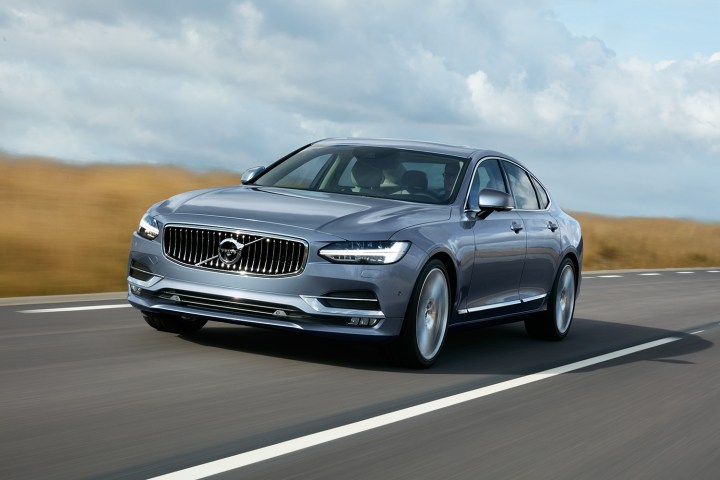
The next Polestar models will be based on the S90 sedan and V90 wagon, and they may offer serious performance, according to Motor Trend. Volvo R&D boss Peter Mertens told the magazine that the S90 and V90 Polestars could develop as much as 600 horsepower. That would put them in the same ballpark as the Germans, but unlike BMW and Mercedes, Volvo doesn’t plan to use big V8s to achieve that amount of power.
Both new Polestar models will be plug-in hybrids, with powertrains similar to the T8 “Twin Engine” system used in the standard S90 and V90, as well as the XC90 SUV. That means they’ll use four-cylinder engines with turbocharging, supercharging, and electric motors to produce power that normally requires twice as many cylinders. It’s also a big leap from the rated 410 hp of the current T8 powertrain.
Read more: Volvo downsizes its winning formula with 40 Series concepts
R&D boss Mertens said the gasoline alone could produce 450 hp with assistance from two electric turbochargers and a supercharger. Volvo actually showed a version of this engine back in 2014, but has not confirmed production plans. The electric motor that powers the rear wheels in current T8 models would be replaced with a beefier unit to get the full 600 hp.
While the standard S90 and V90 will go on sale in the U.S. as 2017 models, it’s unclear whether the Polestar models will be imported. Volvo’s U.S. office said there are currently no plans to sell the cars here, but Mertens said he would like to see that happen nonetheless. Volvo does want to significantly increase sales of both Polestar models and plug-in hybrids in general; it hopes to sell 1 million plug-in hybrids and electric cars by 2025.
Volvo could also do a Polestar version of the XC90, which shares a platform and powertrains with the S90 and V90. The company hasn’t confirmed plans for an XC90 Polestar yet, but it has hinted at the possibility of one before.


